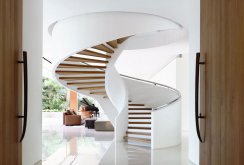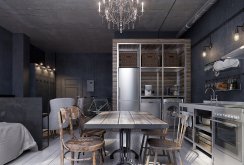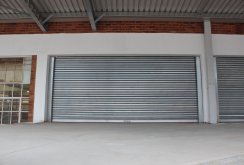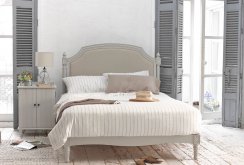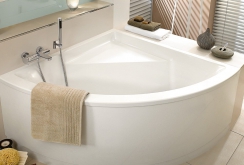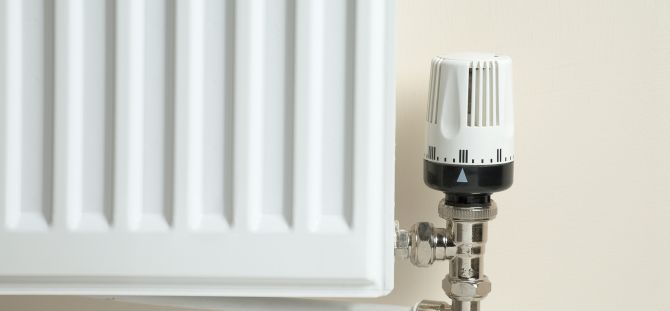 How to connect a radiator: the nuances of choosing and installing heating appliances
How to connect a radiator: the nuances of choosing and installing heating appliances
Few people know how to properly connect a radiator, but it depends on the observance of the necessary sequence of actions what temperature will be in your room in the cold season.
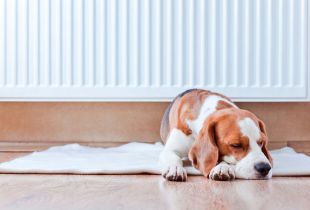 Water radiators: quality and reliability are checked not only by time (22 photos)
Water radiators: quality and reliability are checked not only by time (22 photos)
Classical devices for space heating are water radiators. They are in almost every home and are often found in offices. Depending on the material from which they are made, they will differ ...
 Floor radiators: installation methods, advantages and possible cons (22 photos)
Floor radiators: installation methods, advantages and possible cons (22 photos)
Increasingly, in apartments you can find floor radiators. Their convenient design allows you to place the unit in any room of the house and mask in accordance with the interior.
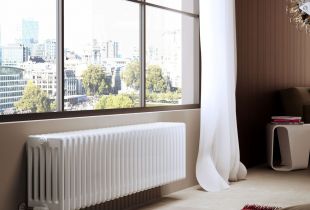 Types of heating radiators: features and benefits
Types of heating radiators: features and benefits
If there is a high-quality heating device in the room, a comfortable atmosphere is created. Heating radiators for an apartment are the main elements without which the existence in the cold season is almost impossible. The device system is designed ...
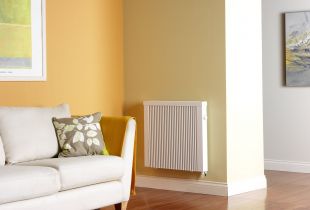 A wall-mounted radiator is a reliable option for a heating device and a non-standard interior element (23 photos)
A wall-mounted radiator is a reliable option for a heating device and a non-standard interior element (23 photos)
As the name implies, the wall radiator is mounted on the wall, but not always under the window. It can be electric or powered by central heating.
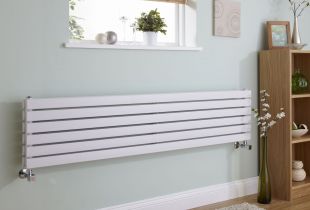 Bimetal radiators: two metals for better quality (20 photos)
Bimetal radiators: two metals for better quality (20 photos)
Bimetal radiators are a good combination of two different metals for the inner and outer shell. Such a tandem made it possible to achieve high technical characteristics and a long service life.
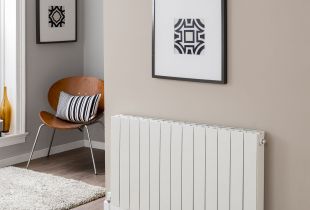 Aluminum radiators: advantages and varieties (20 photos)
Aluminum radiators: advantages and varieties (20 photos)
Replaced by cast-iron systems of the method of heating the premises came aluminum radiators. Such heaters are widely used in a variety of purpose rooms. However, in order to choose the right heating system, it is necessary ...
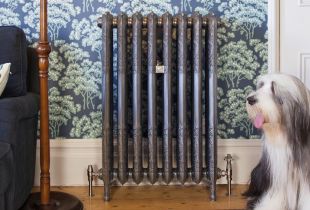 Cast iron radiators: advantages, characteristics and types (27 photos)
Cast iron radiators: advantages, characteristics and types (27 photos)
Cast iron heating radiators have been used for space heating for more than a hundred years. Today, the range of these systems has expanded significantly and allows you to choose a model that will not only heat the premises for ...
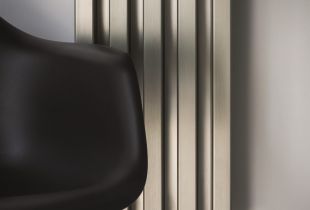 Vertical radiators in the house: convenient or not? (25 photo)
Vertical radiators in the house: convenient or not? (25 photo)
Vertical radiators are an ideal solution for an apartment, house or office with a non-standard layout, panoramic windows and fresh design solutions.
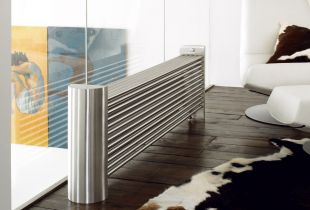 Radiator in the interior: useful technique and decorative element
Radiator in the interior: useful technique and decorative element
The choice of radiator for a house or apartment should be based on the area of the room, aesthetic characteristics, cost of the model. Do not forget to take into account the features of the heating system.
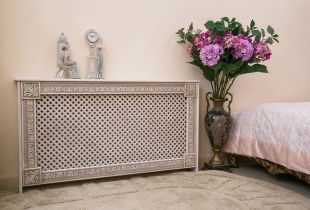 Screen on the battery (20 photos): examples of execution in the interior
Screen on the battery (20 photos): examples of execution in the interior
Screens for radiators. Screen classification. Assignment of screens for batteries. Metal, wooden, plastic, glass screens. Screens from MDF and HDF.

 Water radiators: quality and reliability are checked not only by time (22 photos)
Water radiators: quality and reliability are checked not only by time (22 photos) Floor radiators: installation methods, advantages and possible cons (22 photos)
Floor radiators: installation methods, advantages and possible cons (22 photos) Types of heating radiators: features and benefits
Types of heating radiators: features and benefits A wall-mounted radiator is a reliable option for a heating device and a non-standard interior element (23 photos)
A wall-mounted radiator is a reliable option for a heating device and a non-standard interior element (23 photos) Bimetal radiators: two metals for better quality (20 photos)
Bimetal radiators: two metals for better quality (20 photos) Aluminum radiators: advantages and varieties (20 photos)
Aluminum radiators: advantages and varieties (20 photos) Cast iron radiators: advantages, characteristics and types (27 photos)
Cast iron radiators: advantages, characteristics and types (27 photos) Vertical radiators in the house: convenient or not? (25 photo)
Vertical radiators in the house: convenient or not? (25 photo) Radiator in the interior: useful technique and decorative element
Radiator in the interior: useful technique and decorative element Screen on the battery (20 photos): examples of execution in the interior
Screen on the battery (20 photos): examples of execution in the interior